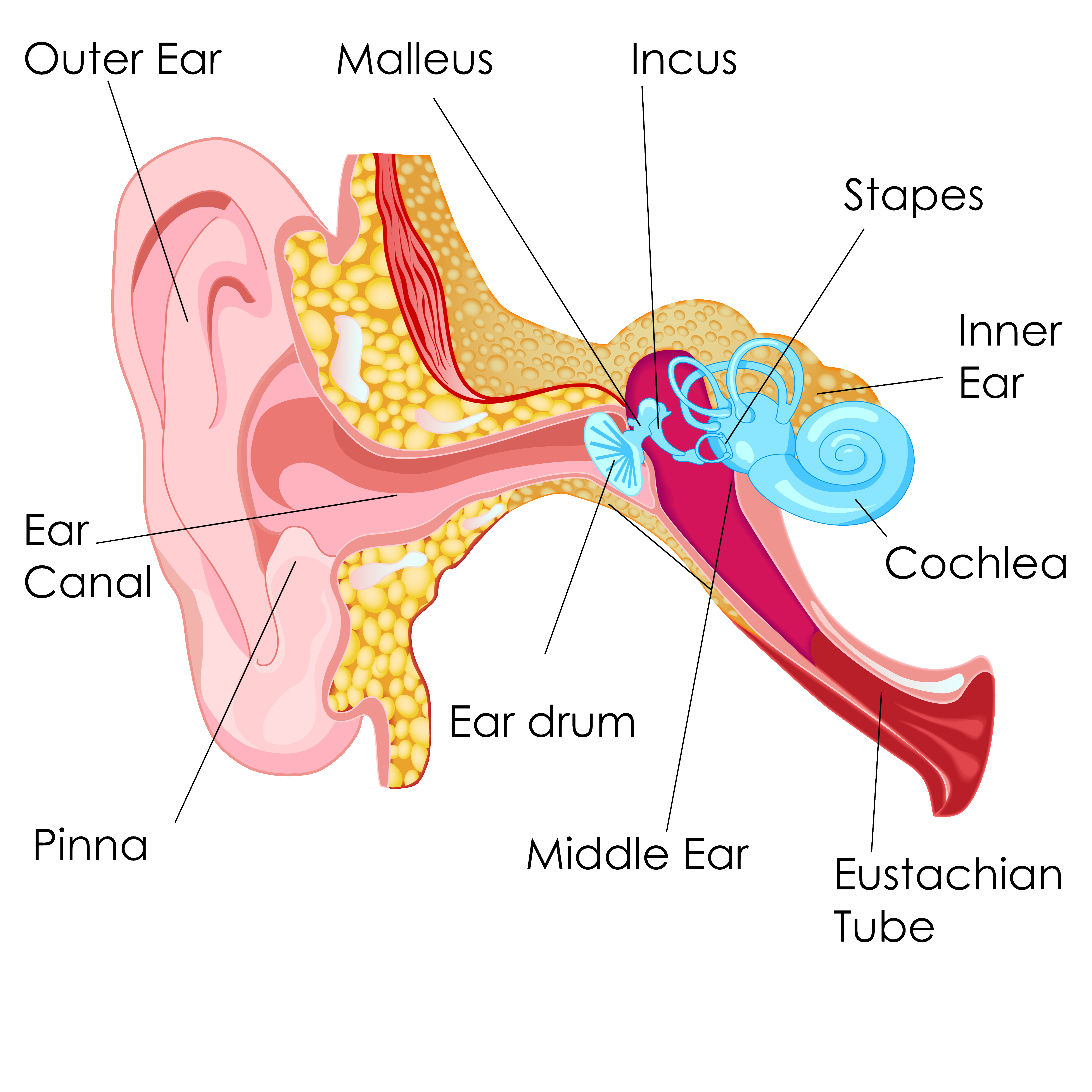Understanding Hearing Loss
The Basics of How We Hear
Sounds waves in the environment can produce the sensation of hearing in two ways: air conduction and bone conduction.
Air conduction:
- A sound wave enters the ear canal and hits the eardrum (tympanic membrane), causing a vibration.
- This vibration triggers movement in the three small bones of the middle ear, commonly known as the hammer, anvil, and stirrup due to their unique shapes.
- Movement of the stirrup causes pressure waves in the fluid-filled inner ear.
- These pressure waves cause movement of microscopic sensory hairs, which stimulate the auditory nerve in different ways depending on the frequency of the original sound waves.
Bone Conduction:
- A sound wave causes the bones of the skull to vibrate.
- This vibration is transmitted directly to the fluid-filled inner ear, where the pressure waves are picked up by sensory hairs.
Find the Hearing Center Near You
The Attributes of Hearing Loss
There are three attributes audiologists use to develop a complete picture of an individual’s hearing loss: Type, Degree, and Configuration of hearing loss.
Type of Hearing Loss

This categorization is based on what part of the auditory system is damaged. Conductive hearing loss occurs when sound waves are muffled before they reach the inner ear, which can be caused by things such as middle ear fluid or abnormality of the tiny bones of the middle ear. Overall sound volume is often reduced as a result. Conductive hearing loss often can be corrected through surgery.
Sensorineural hearing loss develops when there is damage to the inner ear or the nerves that connect the ear to the brain. Sound level is reduced, but more importantly, the ability to hear clearly and understand speech may be impacted. At this time there is no medical or surgical correction of sensorineural hearing loss. In some cases, the hearing loss has both a conductive component and a sensorineural component. This is known as a mixed hearing loss.
Your Online Hearing Quiz
Not sure if hearing aids are for you? Our brief quiz can help you decide.
Degree of Hearing Loss
This attribute refers to hearing loss severity, and is measured by the softest decibel level (dB) of sound a
person can hear.
| If the softest sound you can hear is… | Then your degree of hearing loss is… |
|---|---|
| 0 to 25dB | Normal Hearing |
| 26 to 40 dB | Mild |
| 41 to 70 dB | Moderate |
| 71 to 90 dB | Severe |
| Over 90 dB | Profound |
Configuration of Hearing Loss
This attribute refers to how much the ability to hear has been reduced at each sound frequency. By understanding the configuration of your hearing loss, your audiologist can develop a picture of your hearing health based on types of sounds. For instance, a person may be experiencing only high-frequency hearing loss, or the inability to hear higher pitched sounds. This person would continue to demonstrate a normal ability to hear low frequency sound. The reverse is also possible, with a person having trouble hearing low frequency sounds but having no problem hearing high pitched sounds. A person who has diminished ability to hear sounds of all frequencies would have what is known as a “flat” hearing loss configuration.
The Hearing Aid Process
In just 5 simple steps, KP makes it easy to get your perfect hearing aid.
For More Information
For a diagnosis of your hearing health and more information about causes of and treatments for hearing loss, find a hearing center near you and get in touch with a local audiologist today.

